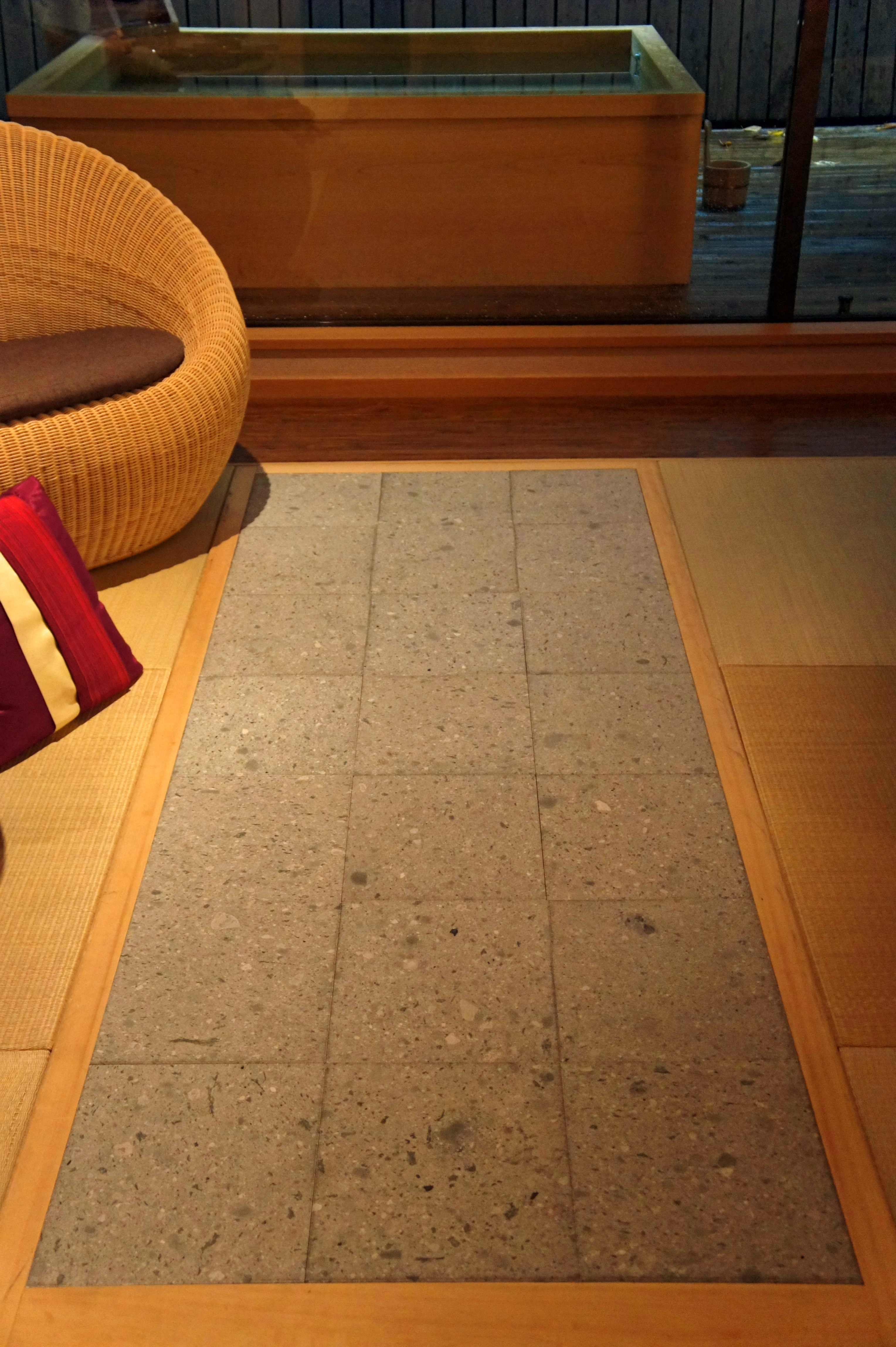Ganban'yoku on:
[Wikipedia]
[Google]
[Amazon]
 is a Japanese bathing method in which an individual lies on heated natural stones in a humid room which itself is usually heated to between 40-50°C (104-122°F). The use of ganban'yoku is believed to have positive effects on both health and beauty.
is a Japanese bathing method in which an individual lies on heated natural stones in a humid room which itself is usually heated to between 40-50°C (104-122°F). The use of ganban'yoku is believed to have positive effects on both health and beauty.
About ganban-yoku
Bathing in Japan
 is a Japanese bathing method in which an individual lies on heated natural stones in a humid room which itself is usually heated to between 40-50°C (104-122°F). The use of ganban'yoku is believed to have positive effects on both health and beauty.
is a Japanese bathing method in which an individual lies on heated natural stones in a humid room which itself is usually heated to between 40-50°C (104-122°F). The use of ganban'yoku is believed to have positive effects on both health and beauty.
History
Tamagawa Onsen inAkita Prefecture
is a Prefectures of Japan, prefecture of Japan located in the Tōhoku region of Honshu.Nussbaum, Louis-Frédéric. (2005). "Provinces and prefectures" in ; "Tōhoku" in . Its population is estimated 915,691 as of 1 August 2023 and its geographi ...
is said to be the birthplace of ganban'yoku bathing in Japan. At Tamagawa Onsen, visitors can lie on exposed geothermally heated hokutolite stones. The first specialized ganban'yoku facility opened in Kesennuma
is a city in Miyagi Prefecture, Japan. , the city had an estimated population of 59,803 and a population density of in 26,390 households. The total area of the city is . Large sections of the city were destroyed by the 2011 Tōhoku earthquake an ...
, Miyagi Prefecture
is a Prefectures of Japan, prefecture of Japan located in the Tōhoku region of Honshu. Miyagi Prefecture has a population of 2,265,724 (1 August 2023) and has a geographic area of . Miyagi Prefecture borders Iwate Prefecture to the north, Akit ...
in 2001. From there, ganban'yoku facilities began opening throughout Japan in what has been referred to as a ganban'yoku "boom." Although the number of locations specializing only in ganban'yoku has decreased since the boom due to hygiene concerns, ganban'yoku rooms attached to ''onsen
In Japan, are hot springs and the bathing facilities and Ryokan (inn), traditional inns around them. There are approximately 25,000 hot spring sources throughout Japan, and approximately 3,000 ''onsen'' establishments use naturally hot water ...
'' facilities can still be found throughout Japan.
Ganban'yoku bathing
Body-sized stones, such asgermanium
Germanium is a chemical element; it has Symbol (chemistry), symbol Ge and atomic number 32. It is lustrous, hard-brittle, grayish-white and similar in appearance to silicon. It is a metalloid or a nonmetal in the carbon group that is chemically ...
, are installed into the floor of a room which is usually heated to around 40-50°C (104-122°F). Bathers, usually dressed in ''kannaigi'' (館内着) which is a type of casual Japanese indoor wear similar to ''samue
The is the work clothing of Japanese Buddhist monks and nuns, worn when engaged in .
Features
Made from cotton or linen and traditionally dyed brown or indigo dye, indigo to distinguish them from formal vestments, are worn by monks of most ...
'', place a bath towel on a stone and lie on it. The stones themselves are heated. The room's temperature, which is similar to that of a low-temperature sauna
A sauna (, ) is a room or building designed as a place to experience dry or wet heat sessions or an establishment with one or more of these facilities. The steam and high heat make the bathers perspire. A thermometer in a sauna is used to meas ...
, combined with the heat of the stone cause users to sweat.
Like low-temperature saunas, ganban'yoku are commonly advertised to have a detoxification
Detoxification or detoxication (detox for short) is the physiological or medicinal removal of toxic substances from a living organism, including the human body, which is mainly carried out by the liver. Additionally, it can refer to the period o ...
effect, improve the circulatory system
In vertebrates, the circulatory system is a system of organs that includes the heart, blood vessels, and blood which is circulated throughout the body. It includes the cardiovascular system, or vascular system, that consists of the heart ...
, and be good for the skin
Skin is the layer of usually soft, flexible outer tissue covering the body of a vertebrate animal, with three main functions: protection, regulation, and sensation.
Other animal coverings, such as the arthropod exoskeleton, have different ...
. It is also considered to have a relaxing and stress-reducing effect.
Most modern ganban'yoku rooms are located at ''onsen
In Japan, are hot springs and the bathing facilities and Ryokan (inn), traditional inns around them. There are approximately 25,000 hot spring sources throughout Japan, and approximately 3,000 ''onsen'' establishments use naturally hot water ...
'' facilities. As clothing is worn in the ganban'yoku rooms, they are separate from the nude bathing area and are mixed-gender. The ''onsen'' bathing area is usually visited after one uses a ganban'yoku in order to wash off the sweat caused by the warm room and stones. {{Portal, JapanReferences
External links
About ganban-yoku
Bathing in Japan